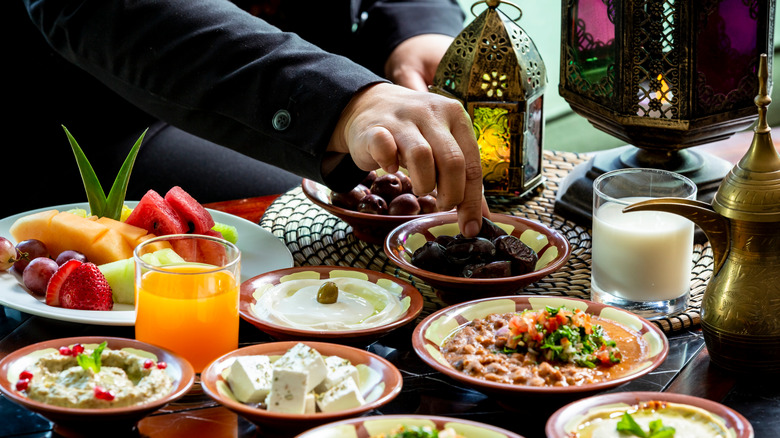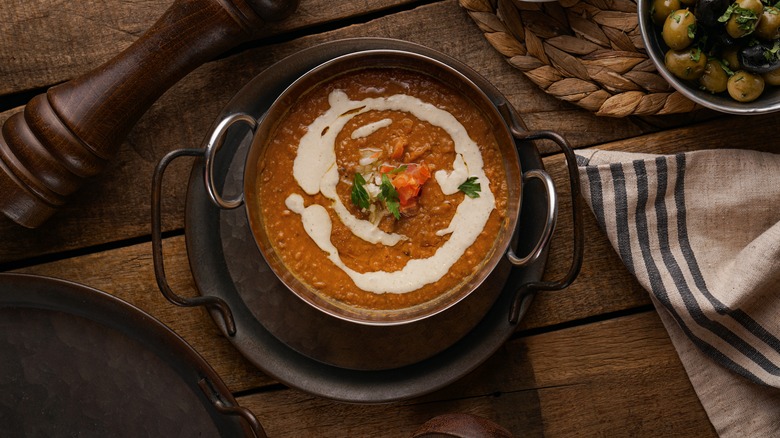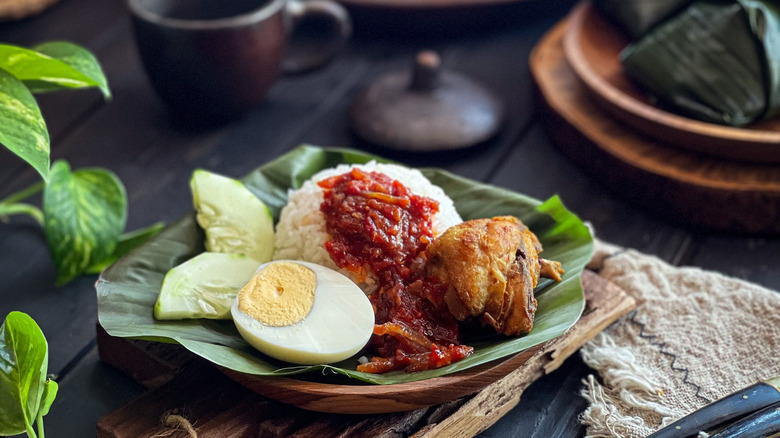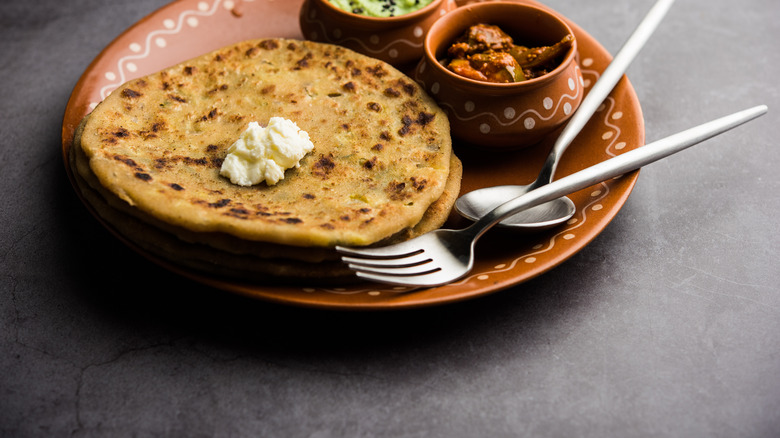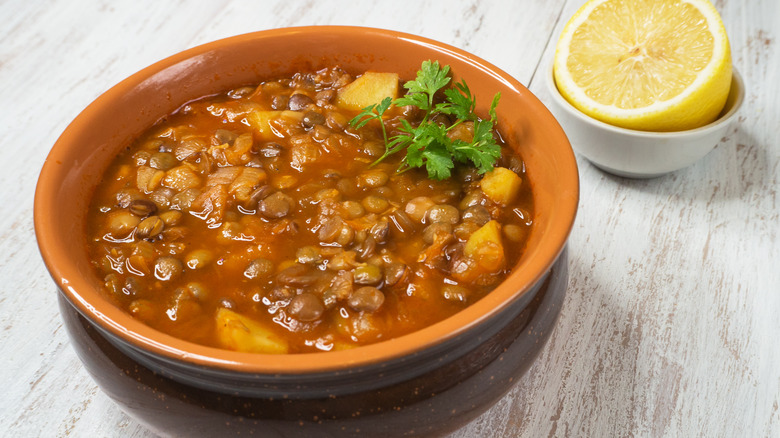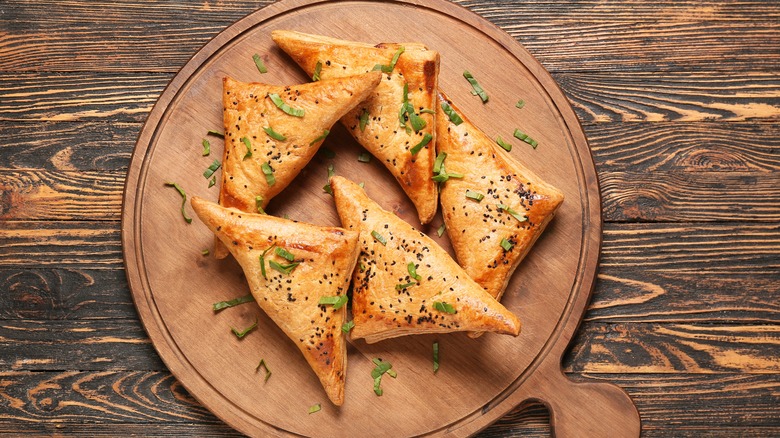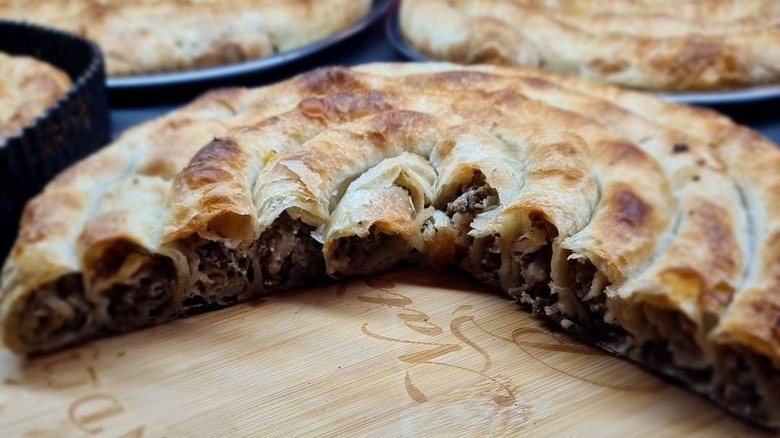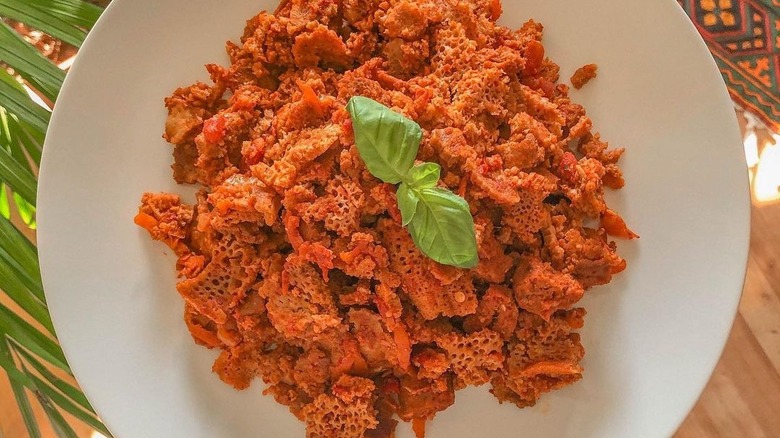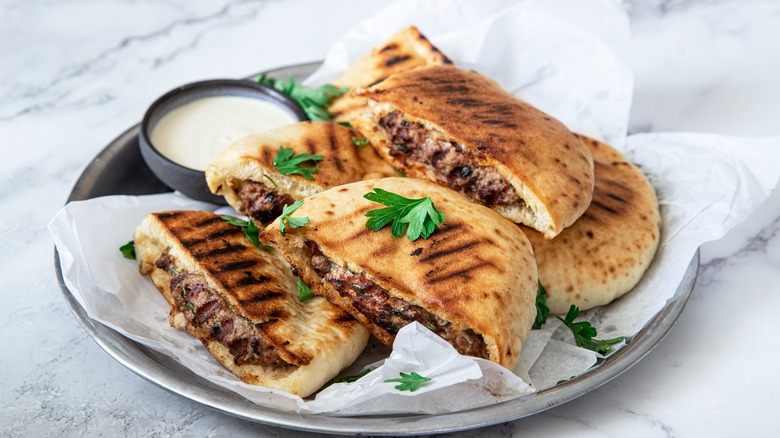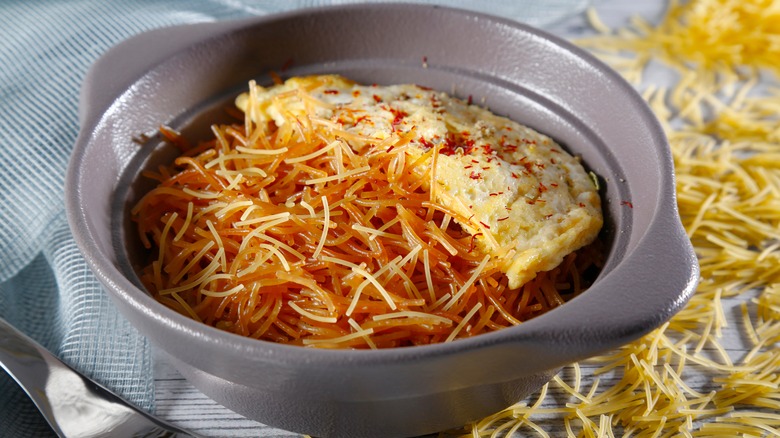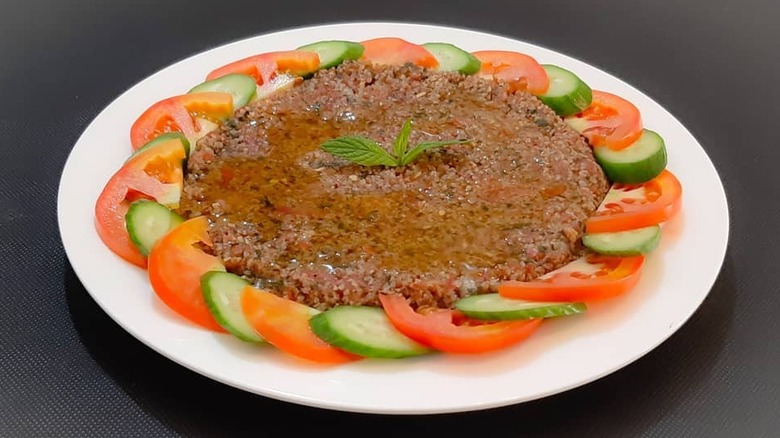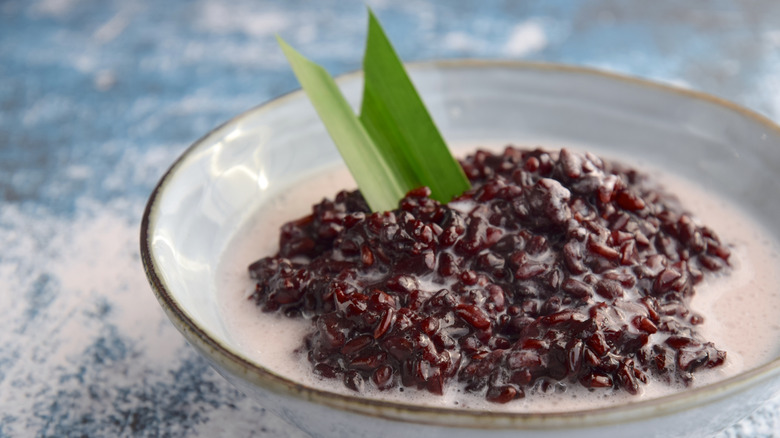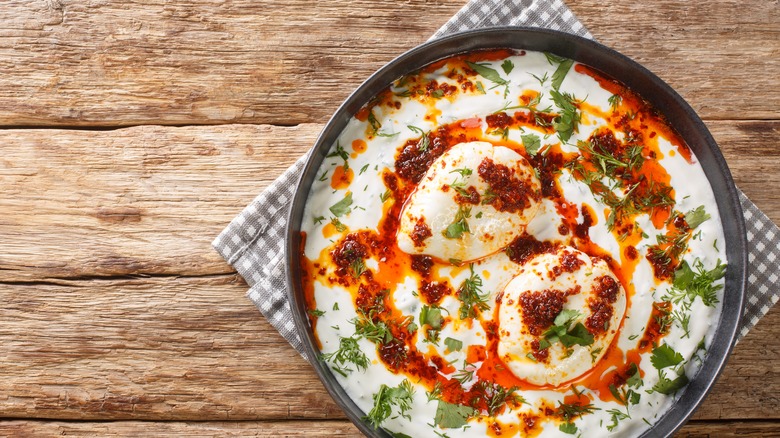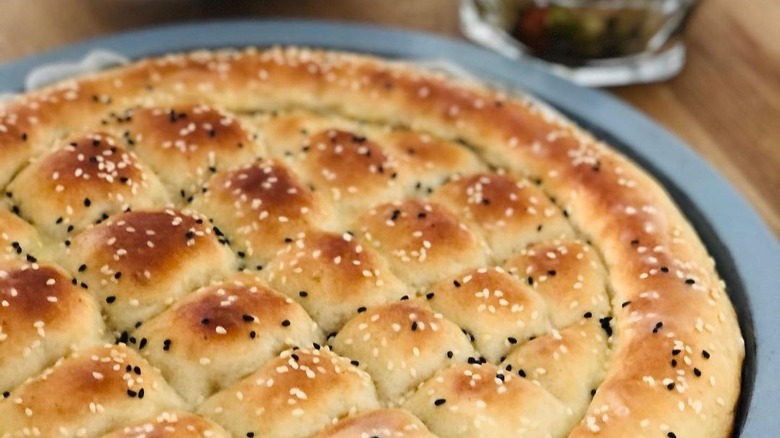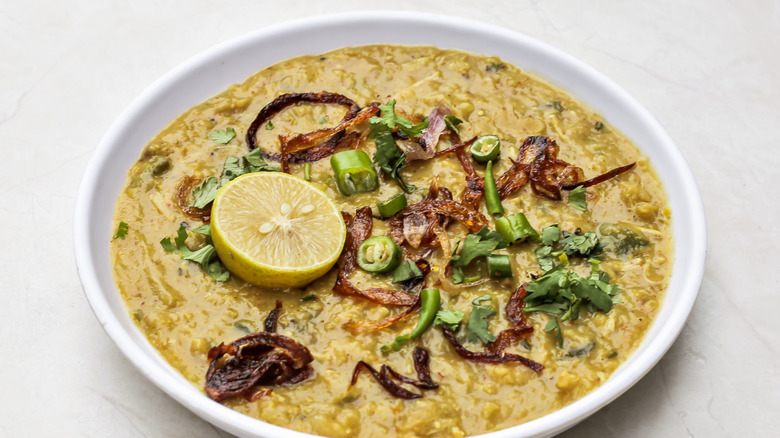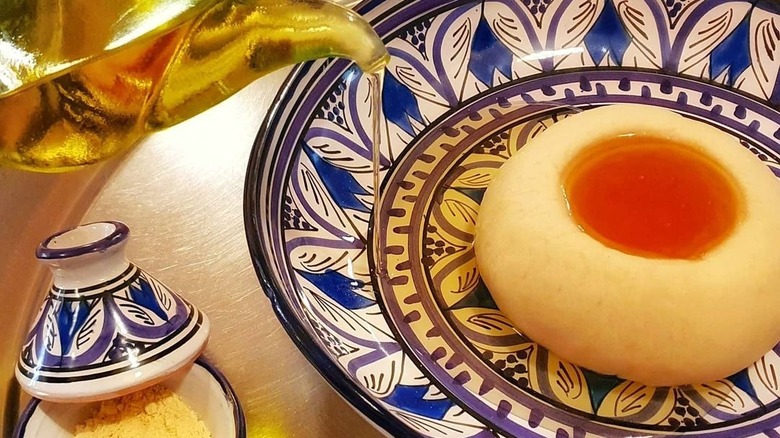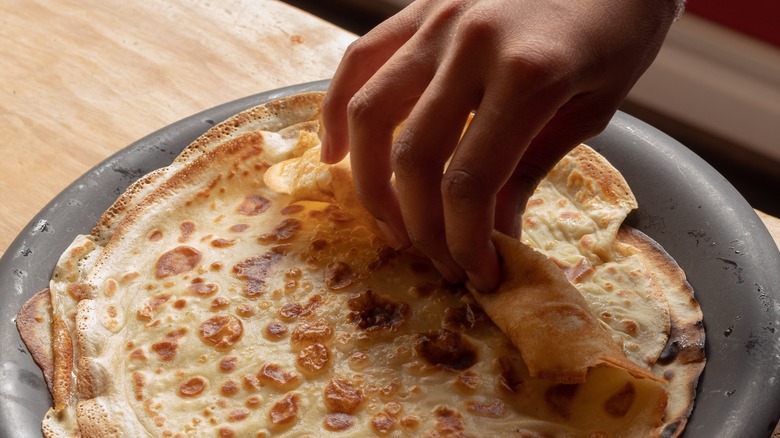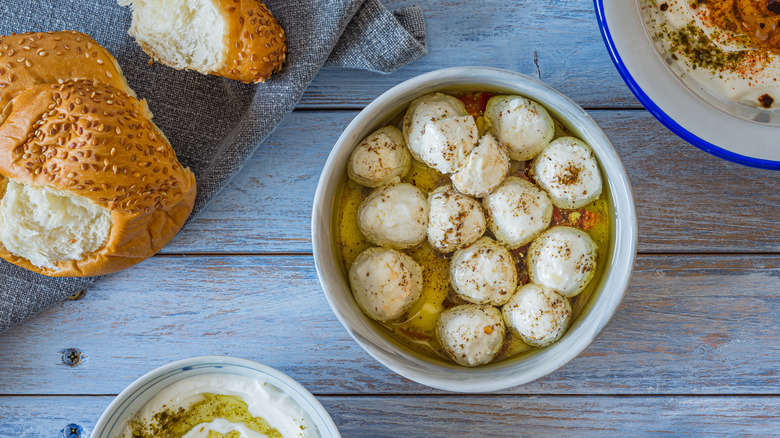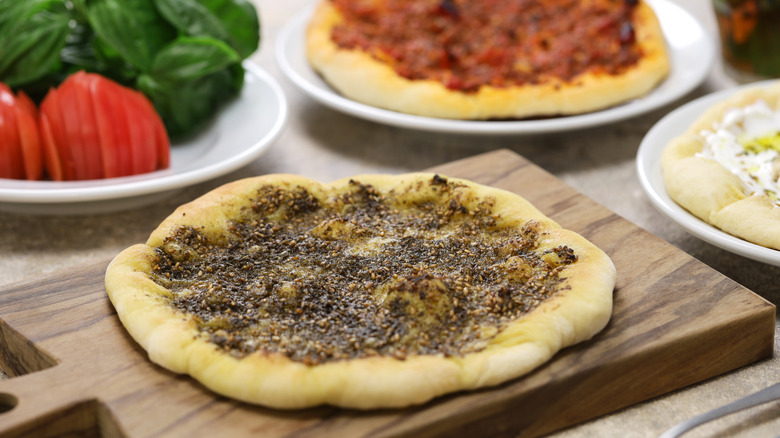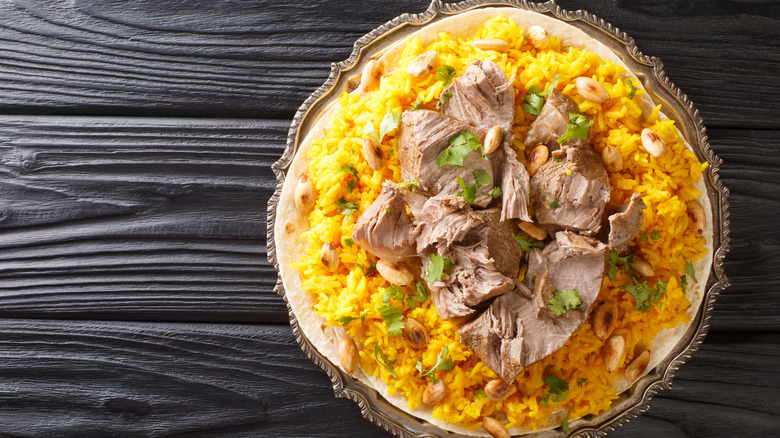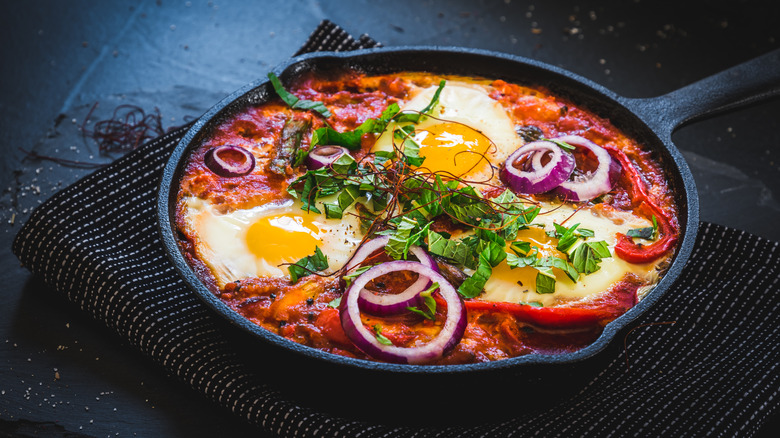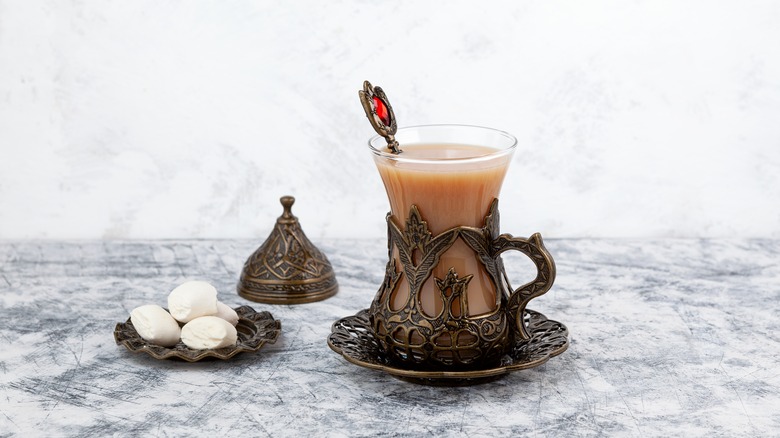The Ultimate Guide To Ramadan Breakfast Foods
During the holy month of Ramadan, Muslims all across the world fast from sunrise until sunset. It's a popular saying in many cultures that breakfast is the most important meal of the day, but it becomes even more significant during Ramadan. Instead of a regular breakfast, Muslims have a pre-dawn meal known as suhoor. After the sun rises, not even a sip of water is allowed to pass your lips until sunset, when the day ends with the post-fast meal of iftar. This usually entails evening prayers before people gather with family and friends for a large meal.
Suhoor is a vital part of Ramadan, needing to be substantial enough to last all day long. A good suhoor should be highly nutritious and include enough carbohydrates to keep people going through the daylight hours. Ideally, suhoor foods should also be not too heavy, to avoid drowsiness, and not too salty, to avoid becoming thirsty during the day. Ramadan has been an essential part of Islamic practice for centuries, and several cultures have created delicious and filling breakfast foods to enjoy first thing in the morning. These breakfasts can, of course, be eaten by anyone at any time of year. During Ramadan, however, they can take on a special significance, being both a nutritious start to the day and a way to help the Muslim diaspora in western countries stay connected to the culture of their ancestors.
Ful medames
A traditional dish from Egypt, ful medames is a creamy and aromatic slow-cooked stew of fava beans. Eaten across the Middle East, it's an Egyptian specialty and a filling breakfast. Fava beans can sometimes be a little tough, which is why ful medames takes time to prepare. The beans should be soaked overnight and then stewed for at least an hour, to get them soft and tender. They're stewed with ground cumin, crushed garlic, and chili peppers for a little extra kick, and the flavors are balanced with a splash of lemon juice for sharpness.
A good-sized dash of fragrant extra-virgin olive oil is also essential. The finished dish is often topped with some fresh herbs and vegetables like diced tomato, cucumber, or spring onions. It's usually served with pita bread and possibly some side dishes like falafel, hummus, or tahini.
Nasi lemak
The cuisines of Southeast Asia are known for being full of bright fragrances, dense flavors, and complex blends of spices, and Malay food is no exception. Nasi lemak is the national dish of Malaysia and a much-loved breakfast food. This meal is built around fragrant coconut rice, flavored with an all-important hint of pandan leaf for its characteristic taste. It's served with sambal, a sweet-spicy paste made with chili, ginger, garlic, palm sugar, and often shrimp — though it's worth noting that not all Muslims agree on shrimp being halal. Nasi lemak is usually served with a few side dishes, including fried anchovies, boiled eggs, and cucumber. It's traditionally served on a banana leaf.
Paratha
Parathas are a type of stuffed flatbread widely eaten in South Asia. They make a hearty breakfast, although they also have a reputation for not being the healthiest option. Parathas can have a variety of fillings, with one everyday type being aloo parathas, stuffed with potato together with a few vegetables, herbs, and spices. Another popular choice for breakfast is anda parathas, made with egg. Other fillings can include spinach, fenugreek leaves, or paneer. These flatbreads are best pan-fried with a little oil or ghee. Packed with calories, they're quick and easy to make and should give plenty of energy to keep going until iftar.
Adasi
Lentil soup has been eaten around the Mediterranean since Ancient Greek times, so long that several cultures have developed their own version of it. One of these is adasi, also known as Persian lentil soup. It's a popular breakfast in Iran, though it's a substantial enough dish that it can just as easily be eaten for dinner.
Adasi takes a long time to prepare but is otherwise quite easy. Like ful medames, the lentils should be soaked overnight and boiled until tender — including some butter or olive oil during cooking is also a good idea, to help the dish thicken. Good adasi is seasoned with a few herbs, like oregano and parsley. For a distinctly Persian flavor, it can also include a little cinnamon and some turmeric. Some recipes also include onion and potato, for flavor and to give a thicker consistency.
Samsa
These are small triangular pastries from Uzbekistan. The pastry is made with ghee, making it flavorful and wholesome, and a typical filling in Uzbekistan uses minced lamb and chopped onions, seasoned with salt, black pepper, and a little cumin. Similar pastries are eaten across Central Asia, with a variety of different shapes. Even in Uzbekistan, samsa has numerous variations. Additionally, both the name and shape of samsa makes the dish very similar to South Asian samosas, the Pakistani version of which is particularly spicy. The big difference, though, is that samsa is baked rather than fried. Extremely moreish, a plate of samsa is guaranteed to go down well on a suhoor table, or on any other breakfast table!
Zeljanica
Hailing from the Balkans in Southeast Europe, this is a flaky spinach and cheese pie made with phyllo pastry. Also known as pita zeljanica, the pastry is exceptionally thin and delicate, and a traditional way to make this dish is to roll the pastry around the filling in a long tube, which is then coiled into a circular shape and baked. Variations of this dish can be found all across the Balkans, sometimes with different shapes and styles — Greek spanakopita is a similar, well-known pastry. It's popular for good reason, too. The combination of soft, white cheese with rich spinach leaves in flaky, buttery pastry is a sumptuous one!
Firfir
Traditionally a Christian nation, Ethiopia is home to a sizeable Muslim population, particularly on the eastern side of the country. An essential staple there is injera, a soft pancake-like bread made from Ethiopian teff grains, and a popular breakfast there is also a good way to use up leftover injera from the previous day. Firfir is made from shredded pieces of injera, fried with onions and tomato puree. It's densely flavored with garlic, ginger, and chili peppers, and for a distinctly Ethiopian flavor, it's seasoned with berbere (a blend of spices) and fried with niter kibbeh, a type of spiced ghee.
Arayes
A popular street food from Lebanon, arayes are grilled pita pockets stuffed with meat. The meat is usually beef or kofta, making a filling and wholesome comfort food. Traditionally served with a yogurt dip, arayes are popular as a snack or a light dinner, but they can make an excellent addition to a suhoor table, particularly if there's a long and busy day ahead. It's also a convenient way to use up leftovers in the fridge, and it's very quick and easy to make a plate of them. It's best to make these with extra-lean meat, though, to stop the finished dish from being too greasy.
Balaleet
A fragrant Emirati dish, balaleet may seem a little unusual to a Western palate. A traditional breakfast dish eaten all around the Persian Gulf but little known outside the Middle East, this is a dish of sweet vermicelli with omelet. The vermicelli is flavored with ingredients typically used in desserts, like rose water, cardamom, turmeric, and saffron, and it's garnished with chopped pistachios. The omelet is flavored with the exact same ingredients. It's a distinctive meal, blending sweet and savory elements in a way that works perfectly. With plenty of energy and nutrition from the omelet and the vermicelli, this is a fine dish to try for suhoor.
Kamounit banadoura
From Lebanese cuisine, kamounit banadoura isn't the kind of thing you're likely to find on a restaurant menu. It's usually a home-cooked dish, light, flavorful, and very nutritious. This dish is mostly made of tomatoes, onions, and bulgur wheat. It's also seasoned with kibbeh, a distinctly Lebanese mix of spices with a rich, slightly sweet taste. An easy dish to make, kamounit banadoura is simply a mixture of finely chopped vegetables with bulgur and seasoning — the bulgur is usually left to soak up the tomato juice for an hour or so before preparing the rest. The finishing touch is to stir in some good-quality extra-virgin olive oil before serving with pita bread.
Bubur ketan hitam
Bubur is a type of rice porridge eaten across Indonesia and other parts of Southeast Asia. It's quite similar to Chinese congee, and bubur ayam (chicken congee) is a popular street food at breakfast time. This version, bubur ketan hitam, however, is a sweet version of the dish. Popular as a dessert, it also makes an excellent breakfast for anyone with a sweet tooth and can give a good boost of energy to start the day. This bubur is made with black glutinous rice and is bursting with the characteristic flavors of Southeast Asian food — coconut milk and fragrant pandan. Bubur ketan hitam can be eaten on its own or served alongside other dishes. It's usually eaten as a home-cooked meal in Indonesia and is easily made on a stovetop or in an Instant Pot.
Çılbır
Eggs are always an excellent breakfast food, nutritious and full of energy, and this Turkish egg dish works perfectly for suhoor. Çılbır is a hearty meal of poached eggs on a bed of wholesome garlic yogurt. Served with a warm butter sauce, a bowl of çılbır gives a light but calorie-rich breakfast, excellent to keep going through a busy, active day. For a spicy kick, it can also be served topped with a sprinkling of red pepper flakes. Even better, it's quick and easy to make. The eggs are best lightly poached to keep a runny yolk, and the entire dish goes excellently with some crusty bread.
Meshtah
Meshtah is a type of bread from Southern Lebanon, where it's a popular dish on the suhoor table. It's best served fresh from the oven, still nice and warm to enjoy with other dishes. This bread is usually made with jreesh, a kind of cracked wheat, although a fine bulgur works just as nicely. Just be certain to soak it overnight to ensure it's soft in time to make the bread. The dough incorporates milk and oil to get a good texture. It's often seasoned with sesame seeds and a hint of anise. Many popular suhoor dishes go very nicely with some fresh bread, and meshtah is the perfect option.
Haleem
This is a Persian dish, partway between a stew and a porridge. Haleem is made with wheat and lamb, although the meat can be left out for a vegetarian option. A wholesome meal in itself, this is a popular dish during Ramadan, particularly in the Indian city of Hyderabad. Rich and comforting, haleem can be eaten to relax for iftar or to start the day for suhoor. Aromatic and buttery, it's flavored with spices like cardamom, cloves, and cinnamon. The only downside to haleem is that it takes a long time to prepare. The wheat should be soaked for 24 hours before being cooked and then takes a few more hours of cooking to soften properly.
Aseeda
A favorite breakfast in Libya is aseeda, a simple pudding which, at its most basic, is made from flour cooked with water. It's usually eaten by hand, flavored with things like honey, olive oil, butter, or molasses. Variations exist, though, and aseeda can also be made with yogurt, or eaten savory with chicken broth. Aseeda is popularly eaten during Ramadan but is also enjoyed during other Muslim festivals like Eid and Mawlid. A very old recipe, originating in Medieval Spain, it's now popular across the Maghreb and elsewhere in Northern Africa, where it's a beloved traditional breakfast. It's also quite similar to fufu, another popular staple food in much of Africa.
Malawah
Pancakes are such a simple dish that versions of them are eaten all over the world, frequently for breakfast. Malawah are a type of pancake from Somalia. Always eaten sweet, malawah are flavored with cardamom and ginger, and popularly served with honey and a little butter. They're cooked in much the same way as crepes, except that malawah aren't flipped over (at least not usually), leaving one side pale and spongy. They cook quickly over medium heat and are sometimes served folded into quarters. A large batch of malawah can make a filling breakfast at any time of year, but they can certainly be a satisfying dish to enjoy for suhoor.
Labneh balls
A flexible Middle Eastern food, labneh is yogurt which has been strained until it has a dense consistency closer to cream cheese than yogurt. It's a popular breakfast food around the Mediterranean, where it's often eaten with pita bread and a little olive oil. In Lebanon, labneh is often made into small balls. Tangier and even thicker than regular labneh, these are usually stored under olive oil and can stay fresh for up to three months at room temperature. Labneh balls are best made from homemade yogurt and are often served rolled in an herb mix like za'atar or spices like chili flakes. A great addition to any breakfast table, these will go perfectly on a suhoor table, too.
Manakeesh
Za'atar is a mix of herbs and spices with toasted sesame seeds, used in a lot of Middle Eastern cuisine, and one popular dish to make with za'atar is manakeesh. Topped with za'atar, and occasionally cheese or minced lamb, it's sometimes called an Arabic pizza. Manakeesh is sometimes eaten for brunch, and is usually made as a convenient way to use up leftover bread dough from the previous day. However, it can also make for a delicious addition to the suhoor table, making a good accompaniment to other dishes and giving a nice energy boost to start the day with.
Mansaf
Mansaf is a hearty meal and a national dish of Jordan and Palestine. This is a dish of bright yellow saffron rice and slow-cooked lamb spiced with cloves, cardamom, allspice, and bay leaves. It's traditionally served on a flatbread with a sauce made from jameed (a kind of very thick yogurt). For more taxing days, this can provide a filling breakfast with plenty of energy. It does, however, take some time to cook, needing a couple of hours to make sure the meat is soft and tender. It may take a little extra work to prepare for suhoor, but it's certain to be worth the effort.
Shakshuka
A delicious and colorful breakfast, shakshuka is eaten all across North Africa and the Middle East, with a few local twists along the way. This dish consists of a thick, chunky sauce of tomatoes and bell peppers, with onion and garlic. It's seasoned with warming spices like flaked chili, paprika, and cumin. Eggs are dropped into the hot sauce and poached directly in the pan, making a substantial breakfast or even a light dinner. Traditionally, the eggs are left slightly runny, but in home cooking, it's not unusual for people to cook the eggs to whatever consistency they prefer. Shakshuka was originally made as a breakfast dish for workers, who'd eat theirs with pita bread.
Teh Halia
When eating a big meal to start the day, it's important to have something to soothe the stomach and aid digestion. Ginger is perfect for this, making ginger tea a perfect suhoor beverage. One particularly good ginger tea to try is teh halia, a sweet milk tea from Malaysia. It's a variation of teh tarik, the frothy milk tea well known as Malaysia's national drink. Teh halia is an excellent beverage to warm up with before sunrise, with the gentle burn of ginger and the invigorating boost of black tea. Rich and sweet, made with condensed milk, it can be brewed as strong as you like by boiling the ginger for longer. It's a nice, soothing start to the day and the perfect way to round off a filling suhoor.
